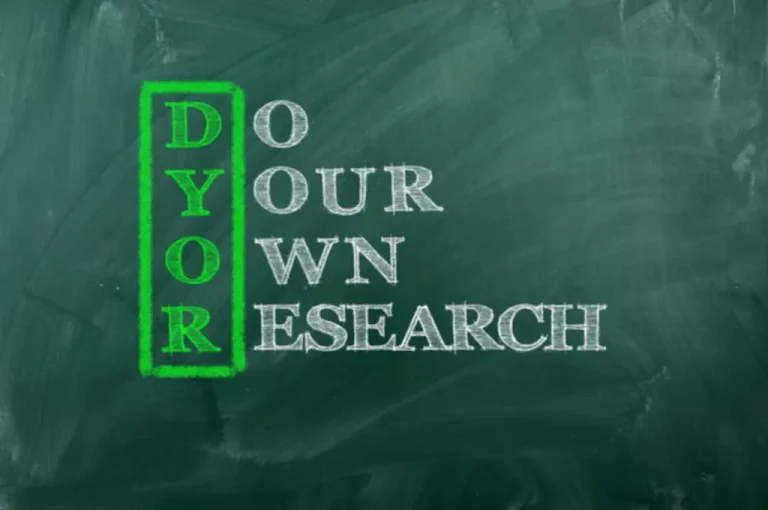Content
In 2022, MAS reinforced that warning, issuing guidelines to crypto service providers that effectively prohibited the advertisement of their services to the public. The US Treasury has emphasized an urgent need for crypto regulations to combat global and domestic criminal activities. In December 2020, FINCEN proposed a new cryptocurrency regulation to impose data collection requirements on cryptocurrency exchanges and wallets. The rule is expected to be implemented by Fall 2022, and would require exchanges to submit Bitcoin suspicious activity reports (SAR) for transactions over $10,000 and require wallet owners to identify themselves when sending more than $3,000 in a single transaction.
Income tax treatment of cryptocurrencies
Commodity Futures Trading Commission decided blockchain payments that Bitcoin, and other virtual currencies, should be properly defined as commodities. Standard setting bodies play an important role in creating governance and industry standards in addition to promoting global cooperation on crypto-asset regulation. Stablecoins, which are usually backed by a fiat currency, are the next frontier of cryptocurrency regulation.

Risks of regulating digital assets
Unsurprisingly, China does not consider cryptocurrencies to be legal tender and the https://www.xcritical.com/ country has a global reputation for harsh cryptocurrency regulation. Under a 2020 amendment to China’s Civil Code, the government ruled that cryptocurrencies have the status of property for the purposes of determining inheritances. Cryptocurrencies and exchanges are legal in Australia, and the country has been progressive in its implementation of cryptocurrency regulations.
The Payments Newsletter including Digital Assets & Blockchain, December 2023 / January 2024
Meanwhile, the US Securities and Exchange Commission (SEC) has indicated that it considers cryptocurrencies to be securities, and applies securities laws comprehensively to digital wallets and exchanges. By contrast, The Commodities Futures Trading Commission (CFTC) has adopted a friendlier, “do no harm” approach, describing Bitcoin as a commodity and allowing cryptocurrency derivatives to trade publicly. Schoenherr is a full-service law firm with a strong presence in the Central and Eastern Europe (CEE) region. ASIC has clarified expectations for crypto assets that form part of the underlying assets of exchange-traded products (ETPs) and other investment products (see ASIC Information Sheet 230 (INFO 230)).
Global rules and regulations for cryptocurrency
As cryptocurrency’s underlying technology, DLT revolutionizes the double-entry accounting that has continued for hundreds of years. By using asymmetric encryption authentication methods and peer-to-peer network architecture, it maintains a continuous ledger database that cannot be tampered with (Gourisetti et al. 2021). It is possible to enable the participating nodes in the blockchain to directly realize value transfer without mutual recognition and establishment of trust relationships, instead of relying on offline intermediaries. This mechanism greatly increases the difficulty of tampering with information, making no false account truly technically realized. The natural trust gene brought by DLT is an epoch-making change in double-entry bookkeeping technology that may falsify accounts. Its significance is no less than the transition from a single account book to double-entry bookkeeping, which will profoundly impact human economic life in the future.
The CFPB, an independent agency, also voluntarily provided information to the Administration as to risks arising from digital assets. The risks that agencies highlight include, but are not limited to, money laundering; terrorist financing; hacks that result in losses of funds; and fragilities, common practices, and fast-changing technology that may present vulnerabilities for misuse. Since its birth in 2008, cryptocurrency has grown in popularity and become an important part of the global financial system. Cryptocurrencies may significantly alter financial structures as they exist today and transform the next generation of money and payments. However, these changes come with significant concerns around cryptocurrencies for their potential negative impacts on markets, investors, users, and the environment. Governments around the world are looking to create regulations to prevent these harms while encouraging the innovative capabilities of cryptocurrencies.
Donors can track how their contributions are utilized, ensuring accountability and reducing the risk of fraud. The World Food Program (WFP), for example, has incorporated cash transfers for humanitarian assistance; the company implemented blockchain technology to improve the efficiency and transparency of these transfers and currently empowers 4M+ people monthly. In the supply chain domain, blockchain enables the automation of payment processes as goods move through the chain, ensuring transparency and precise payment reconciliation.
One of the requirements to be authorised as crypto-asset service provider under MiCA is to have a registered office in a Member State in which at least part of the crypto-asset services are carried out. Crypto-asset service providers should therefore have their place of effective management in the EU, and at least one of the directors should be resident in the EU. This implies that non-EU companies (which have their registered office in a foreign jurisdiction) are not allowed to provide crypto-asset services in the EU.
The last group of assets outlined by MiCA provides a ‘catch-all’ for any assets that aren’t EMTs or asset-referenced. A common example of a token asset that falls into this group is the utility token, which is not classified as a financial instrument according The Markets in Financial Instruments Directive (MiFID II). Blockchain technology records data and transactions in a shared, tamper-resistant, decentralized digital ledger—offering the promise of faster and cheaper financial transactions with no middlemen. While crypto is not considered legal tender in Canada, the country has been more proactive than others about crypto regulation. Canada became the first country to approve a Bitcoin exchange-traded fund (ETF), with several trading on the Toronto Stock Exchange. Central Bank Digital Currencies (CBDCs) are issued by central banks and backed by governments.
- The guidance states that “Virtual Currency Trading Platforms…are not money transmitters,” and that “Virtual Currency Kiosks, ATMs, and Vending Machines…would not be money transmitters under the MTA.” Therefore, neither type of cryptocurrency business is subject to the Money Transmitter Act or its licensing requirements.
- Learn more about progressive decentralization, how to apply ‘decentralization test’ to your project and how does the governance minimization works to achieve full or sufficient decentralization.
- What is very notable in the EO is the shift from the 2017–2018 language of “crypto tokens” to a much broader language of “digital assets”.
- Thus, the existing private legal rights, obligations and assets legal regime should carry over to the new medium of owning and transacting in them.
- It also refers to the need to ensure that the Payment System Regulator’s (PSR) APP fraud mandatory reimbursement scheme is introduced in a ‘proportionate and effective way’.
- The author proposes and analyzes an example of contract law-based crypto tokens, which do not fit into the existing securities law approach, while representing basic private law concepts that have existed for millennia.
His main area of practice is national and international tax law, and he advises international companies on tax structuring and tax planning, transactions as well as tax proceedings. As mentioned above, the FMA has already provided comprehensive guidance on the application of MiCA in Austria. The guidance outlines the requirements for the application process, including necessary documentation, legal foundations, and regulatory standards. In this respect, the FMA emphasises the need for detailed and complete applications to avoid delays. It also highlight its role in supervision and ongoing updates to ensure compliance with evolving regulatory standards.
In addition to existing rules on transfers of funds, the TFR introduces new rules on the information on originators and beneficiaries accompanying transfers of Crypto-assets . The new rules are to prevent, detect and investigate money laundering and terrorist financing where at least one of the crypto-asset service providers involved in the transfer of Crypto-assets is established in the EU. In addition, the TFR lays down rules on internal policies, procedures and controls to ensure implementation of restrictive measures. Among other objectives, this report examines regulatory gaps and coordination in regulating these applications. GAO reviewed and analyzed government and industry reports, government guidance and speeches, and laws and regulations.

Due to the exponentially growing monetary value and risks involved, initial attempts to regulate blockchain were made in 2017. The primary drivers in the 2017–2018 period were initial coin offerings (ICOs) and other schemes intended to channel investments into new crypto ventures17. In many instances, these efforts were driven by opportunism and have been likened to a new gold rush18. Luckily, blockchain payments can integrate with most existing financial and accounting systems. Blockchain can streamline the process of remittances by providing a more direct and cost-effective means of transferring funds internationally. Users can send and receive remittances without the need for traditional money transfer services, which often charge a premium for both currency conversion and international remittances.
Once authorized in their country of registration, CASPs will be able to provide their services across all EU member states. MiCA regulation will allow regional Web3 businesses to operate in the EU market without needing to attain a license from each EU country. The only instances in which MiCA will apply is if the NFT has characteristics that make it similar to one of the assets that MiCA governs.
Sandboxes are controlled environments where companies can test their products and services while engaging with relevant regulators. At present, China’s legal positioning of cryptocurrency is ambiguous, which has confused inconsistent law applications in judicial trials. Since 2018, the Australian Transaction Reports and Analysis Centre (AUSTRAC) has required exchanges operating in Australia to register, identify and verify users, maintain records, and comply with government AML/CFT reporting obligations. “Hogan Lovells” or the “firm” refers to the international legal practice that comprises Hogan Lovells International LLP, Hogan Lovells US LLP and their affiliated businesses, each of which is a separate legal entity. On 27 June 2024, the crypto-currency exchange provider Coinbase announced that it has partnered with Stripe, a financial infrastructure provider.
